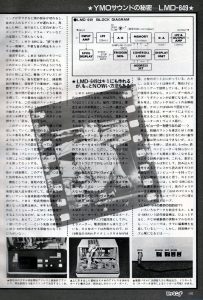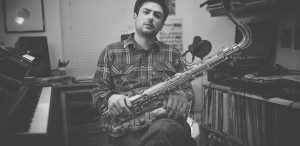1981 was a year of exciting progression in popular music production. Synthesisers had become a studio staple and new techniques to compress, gate and reverberate acoustic and synthetic drums, were giving pop records unprecedented punch. Prince was working on Controversy and made early use of the Linn LM-1 drum computer: a machine which used digital sampling technology to reproduce real drum sounds time and again, without decaying quality. Public Image Ltd. were releasing The Flowers of Romance, a heavily percussive record upon which engineer Nick Launay drew influence from the gated reverb sound of Peter Gabriel’s third studio LP.
But sampling technology – rather than enhancing or substituting existing musical sounds – presented an opportunity to add altogether new ones to the musical palette. In earlier decades, the pioneers of musique expérimentale, contemporary classical and art music, had used obscure sound to musical effect. Rolf Liebermann for example on Symphonie “Les Echanges” – a composition for 156 machines. But digital sampling technology enabled musicians to record, access, manipulate and trigger sounds to achieve musical results, that might have previously been unattainable.
The LMD-649 wasn’t the only digital sampler making its way to market in the early eighties, but it was one boasting unique characteristics. According to information published on Wikipedia, translated from a feature in Japan’s Rockin’f magazine: ‘The LMD-649 was the first PCM digital sampler, capable of playing and recording PCM samples with a 12-bit audio depth and 50 kHz sampling rate, stored in 128 KB of dynamic RAM memory’. That sample rate was double that offered on the Fairlight CMI series I at the time, contributing to a higher fidelity in sound samples.
Koharu Murata, an engineer with Toshiba EMI, was the creative mind behind the design. Based in Tokyo, as Yellow Magic Orchestra had been for the creation of their first four albums, he entrusted them with the handmade prototype.
‘YMO hadn’t fully embraced digital technology by that time, but a 32-track digital recorder had been installed in their studio shortly before recording BGM in early ’81.’ On Technodelic, a record described as ‘vastly ahead-of-its-time’ by Boomkat , the group placed ‘emphasis on mysterious abstract textures’ (Guardian) bringing LMD-649 samples, TR-808 drum sounds and Prophet 5 synth textures to the fore alongside established, experimental sounds.
The track Neue Tanz, is a captivating example of their efforts. Skipping 808 hats underpin the rhythm, with electric bass adding a funky, gravelly feel. A gated, metallic snare sound dominates the final bar of each cycle and Indonesian kecak chanting (sampled on the LMD-649) rifles from channel to channel. Those sounds, along with prepared piano and undulating synth notes, make for a submersive and captivating listening experience that completely warrants the ‘Technodelic’ title.
YMO’s discography is littered with significant and progressive work, but for some, this album is their crowning achievement. Boomkat consider it ‘part of a classic electro-pop couplet along with its predecessor, BGM’ and Ishmael Ensemble leader Pete Cunningham feels it ‘shows YMO at their most inventive and bold’.
Its material has been remixed by the likes of The Orb and 808 State in the past, but never before has an accomplished group of electronically-inclined jazz musicians and producers attempted to rework it. That’s exactly what Ishmael Ensemble will do at Band on the Wall on 9th May!
Expanding upon the album and their preparations to perform it, Ishmael explained ‘In both their arrangement and production, the songs feel more free-form and daring than their earlier work, this in turn allowed us to approach them with a bit more freedom and creativity. Once we’d scratched away at the surface, the songs revealed themselves as really beautiful pieces. A lot of the chord progressions and melodies were new to us and pushed us out of our comfort zones, I for one have really enjoyed translating some quite bizarre sounds to the saxophone. We’re now just itching to perform the show to an audience having been locked in a rehearsal room for 6 months!’.
Pick up tickets for what will be a gripping live experience, here.






